If we had to compare interior design and fashion, we’d say that lighting is to homes what jewelry is to an outfit. From statement chandeliers to sculptural wall sconces, light fixtures are the must-have accessories that elevate your design aesthetic and tie the look together.
But professional and amateur designers alike know that selecting the right light fixtures — and the right bulbs, for that matter — is more complicated than what meets the eye. Functionality and style aside, there’s a little-known technical side of cultivating ambiance that involves bulb wattage, temperature, color, and brightness.
Then, there’s the fixtures themselves — you can choose from floor lamps, task lamps, recessed lighting, LED strips, chandeliers, pendants, flush mounts, sconces, picture lights, track lighting, and more. If you’re already overwhelmed, never fear — we’re breaking down all things lighting below. Ahead, find lighting 101 and a few pro tips, courtesy of Havenly designers.
Lighting 101: Key Considerations
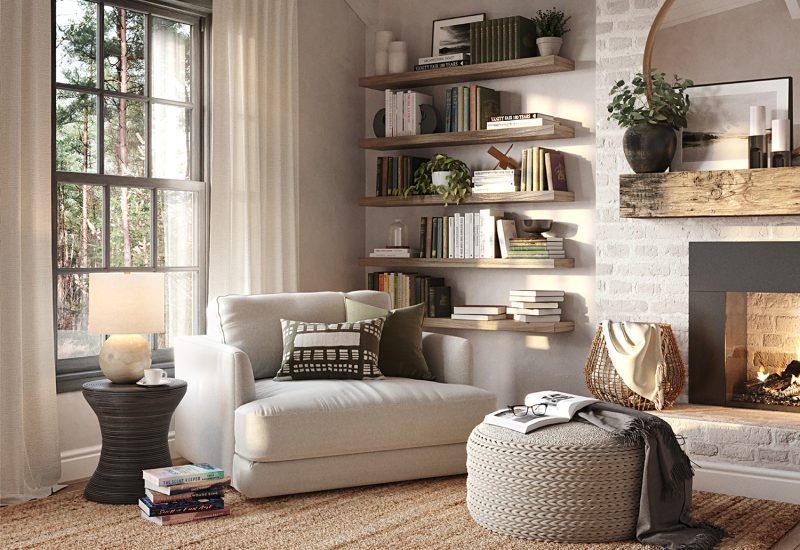
- Temperature & Color: Light bulbs emit a different color depending on the temperature, measured in Kelvins (K). This figure ranges from 2000K (warm yellow light) all the way up to 6500K (cool blue light), with more neutral white light landing somewhere in the middle. At home, 2700K bulbs will give you that soft, ambient glow you know and love. 6500K is not h0me-friendly — think sterile office space or harsh motel bathroom lighting.
- Brightness: Bulb brightness is a bit easier to remember — it’s measured in Lumens and the higher the number, the brighter the bulb! Lumens range from about 250+ to 1100+ and remain consistent across different types of lighting, from LED and incandescent to CFL & halogen. Go for higher lumens in high-traffic spaces, and lower in cozier areas.
- Watts: Watts refers to the amount of energy a bulb uses to emit light. This figure ranges from 4W (energy-saving) to 100W (very strong light), with standard home lightbulbs landing around 60W. LED and CFL bulbs are considered energy-saving and can actually help lower your electric bill (words we like).
1. Create a plan of attack
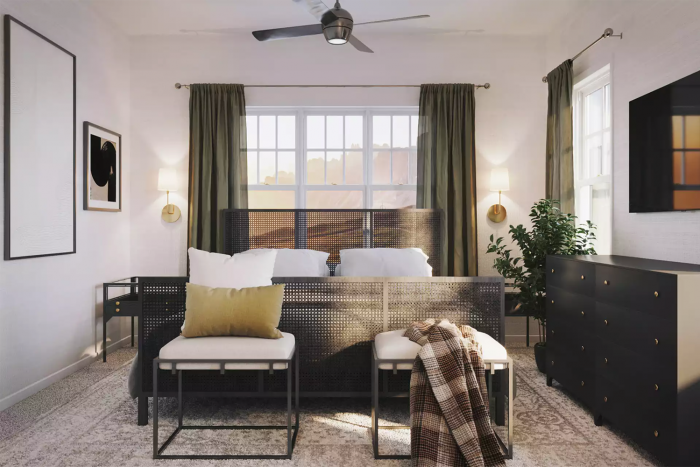
Between style, function, and placement, there’s a lot of decision making involved in lighting selection. We suggest coming up with a game plan for each room to prevent overwhelm and minimize room for error. Think about how you use each space — do you watch a lot of TV in your living room? Where do you host guests? What’s the natural light like? What existing lighting do you already have? In a living room with a large TV, for example, you may want layered, dimmable lighting in order to control the ambiance: brighter for game night, lower for Netflix binges.
2. Layers on layers
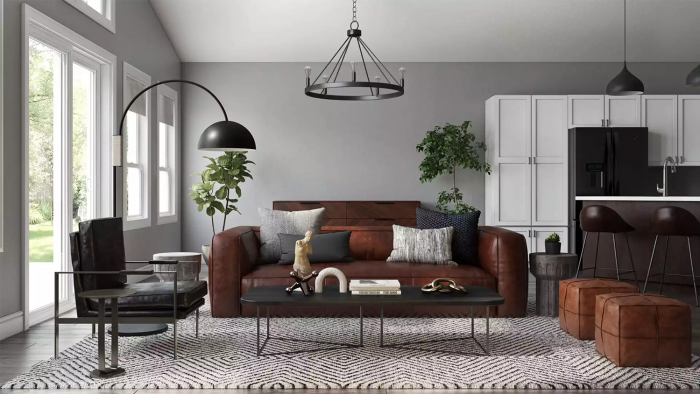
As mentioned above, curating elevated, design-forward lighting in your home all comes down to layering. Rather than exclusively relying on overhead canned lights, use accent lights to highlight architecture, wall art, or shelving. Add floor lamps and wall sconces for added ambiance, and consider installing statement chandeliers or pendants if space and budget allows. Generally speaking, you should aim to have 2-3 additional sources of light in each room beyond canned (or more, depending on size).
3. Highlight design features
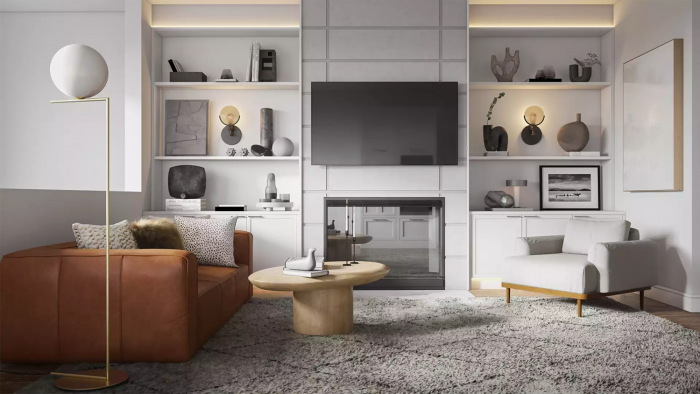
Thanks to LED accent lights, you can add a little spotlight just about anywhere. Have fun with it! You can illuminate staircases, cabinets, unique wall paneling, shelving, behind TVs, and beyond to create a moody, ambient scene. This is an especially important consideration in entertainment-focused rooms like dens and basements.
4. Consider smart bulbs
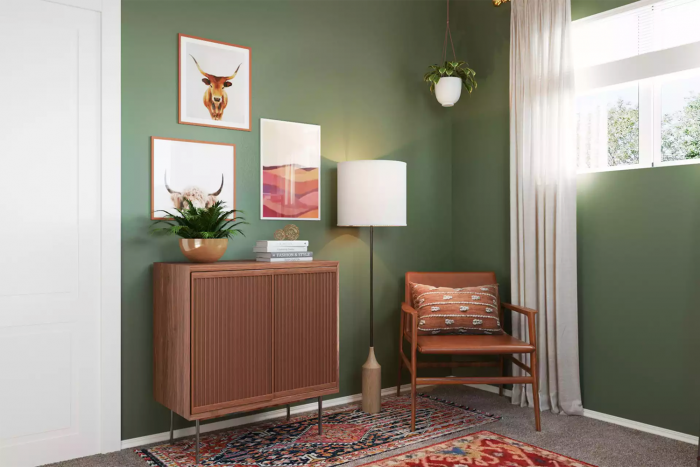
It’s 2022 — why not lean into smart bulbs and remotes to make life that much easier? Lower watt LED bulbs can actually lower your electric bill, while smart bulbs allow you to control the color, temperature, and brightness. Phone-controlled lighting is extremely helpful when you need to hit the lights before carrying in an armful of groceries. Or maybe you just want to play with bulb colors from your phone — either way, we support it!
5. Add statement lighting
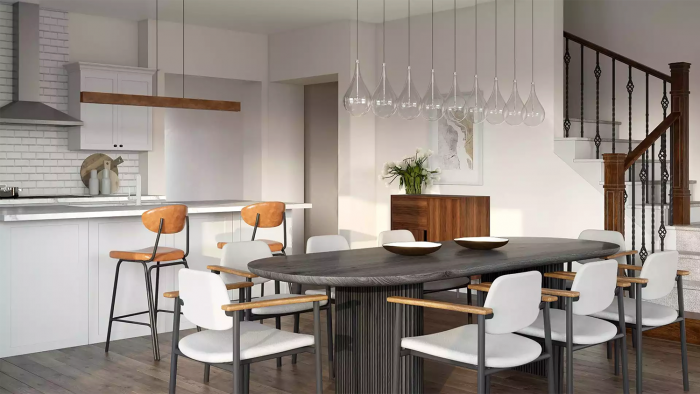
As designers, statement lighting is our absolute favorite. From focal pendants and chandeliers to funky sconces and table lamps, these accents make any home feel more elevated and design-forward. Add statement lighting over a dining room table or kitchen island, in an entryway, or in a living space with high ceilings. When in doubt, draw the eye up!
6. Embrace dimmer switches
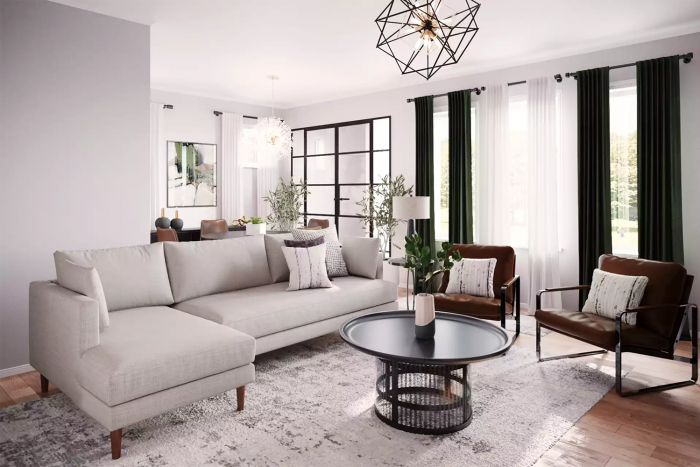
Looking for a quick and easy way to control the ambiance in any room? Enter dimmer switches. Being able to tweak your overhead lighting as you see fit does wonders for the overall atmosphere and reduces the need for multiple ambient lighting sources. Plus, dimmable lights lengthen the bulb’s lifespan and use less energy overall!
Looking for a way to overcome your unique home dilemmas? Work one-on-one with our expert interior designers for just $129 per room. Get started today with our style quiz.


